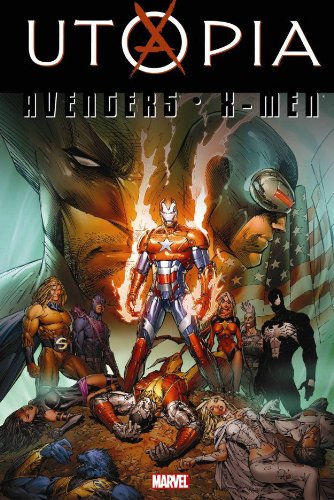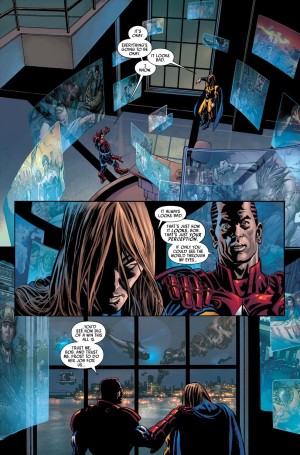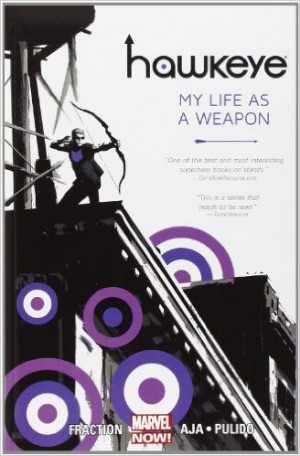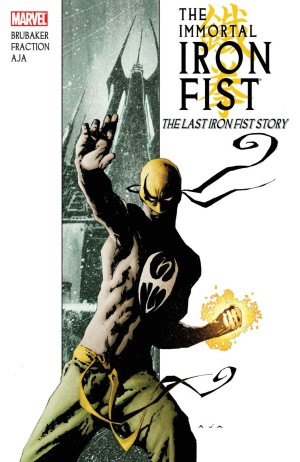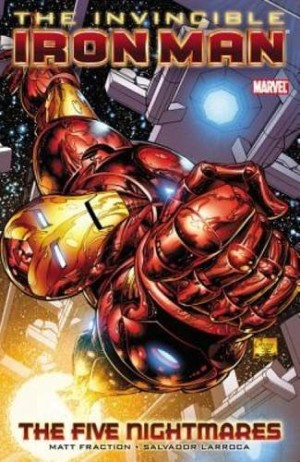Review by Ian Keogh
Utopia is set during the period when Norman Osborn was charged with keeping America safe and given a free role in doing so, while the X-Men are located near San Francisco. Osborn’s Dark Avengers are sent to keep the peace as San Francisco descends into chaotic rioting between mutants and anti-mutant factions. It’s orchestrated by the seemingly reasonable, but bigoted Simon Trask, who predicts the likely reaction of some mutants when confronted. It leads Osborn to decide his own team of X-Men would be useful as well as his own team of Avengers. The strength of Osborn is his manipulative personality, and he recruits a shocking ally to end the opening chapter, one that divides the X-Men.
With regard to further plot it’s best to note that deception is key, and several levels of deception play out simultaneously. That’s what happens when you ally Osborn with formidable telepath Emma Frost and several others known for their deceit. A succession of conflicts portray the team of X-Men led by Frost as key in maintaining social order and dealing with rogue elements of their own kind. Meanwhile behind the scenes Cyclops’ team of X-Men have their own agenda.
Matt Fraction’s plot takes the X-Men from Sisterhood and moves from one conflict to the next incorporating a broad cast, yet never really thrilling until an audacious ending playing on Osborn’s egotism that shifts the status quo for the X-Men. The opening chapter is allegedly drawn by Marc Silvestri, yet no less than four people are credited for pencil assists and nine inkers contribute. Between them, though, they illustrate a credible portrayal of San Francisco aflame. The remainder of the main story is drawn by Terry Dodson, Mike Deodato and Luke Ross, all of them producing very good superhero work, and none, let it be said, requiring any assistance with the pencilling. Deodato particularly impresses in the concluding chapter with a spectacular shot of Bullseye/Hawkeye.
A number of associated comics connected with Utopia, and these are supplied as back-ups. Craig Kyle and Chris Yost write a piece illustrated by Bing Cansino intended as a clear the air discussion, but it descends into maudlin self-pity, uncharacteristic for Emma Frost, no matter what she’s going through.
Not all the X-Men are involved in the main storyline, so Mike Carey and Dustin Weaver let us know what Gambit, Rogue and Danger are up to. They’re keeping bystanders safe during rioting, but it involves Rogue facing off against Ms Marvel and Gambit taking on Ares, followed by Trace having a few problems. Taken in isolation, these two chapters tell their own story enjoyably.
We also have an extended look at the Dark X-Men team, how they were gathered and how it is that the likes of Namor are seemingly content to take orders from Osborn. The best of these short sequences shows Osborn recruiting the other-dimensional Henry McCoy, with Shane Davis writing quite the baiting encounter, although Jason Aaron and Jock’s sequence with Wolverine is also above par. Actually, whether via editorial brief or coincidence several of the writers portray a provocative, prodding Osborn. Paul Cornell is teamed with Leonard Kirk for three strips, and Kirk is the best of the assorted artists working in standard superhero style, although one day Paul Davidson will be very good.
Utopia has its moments, but for every decent contribution there’s equally one that’s ho-hum, and the ‘Utopia’ story itself never really grabs despite the talent involved. Fraction’s X-Men continue with Nation-X. His chapters of Utopia are also found in the second volume of Uncanny X-Men: The Complete Collection by Matt Fraction.
